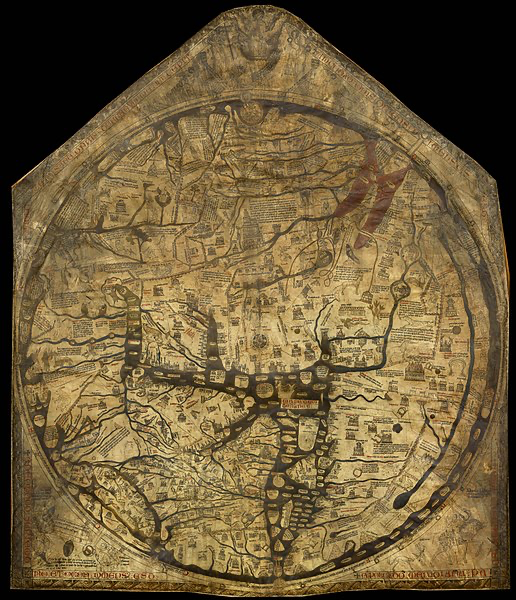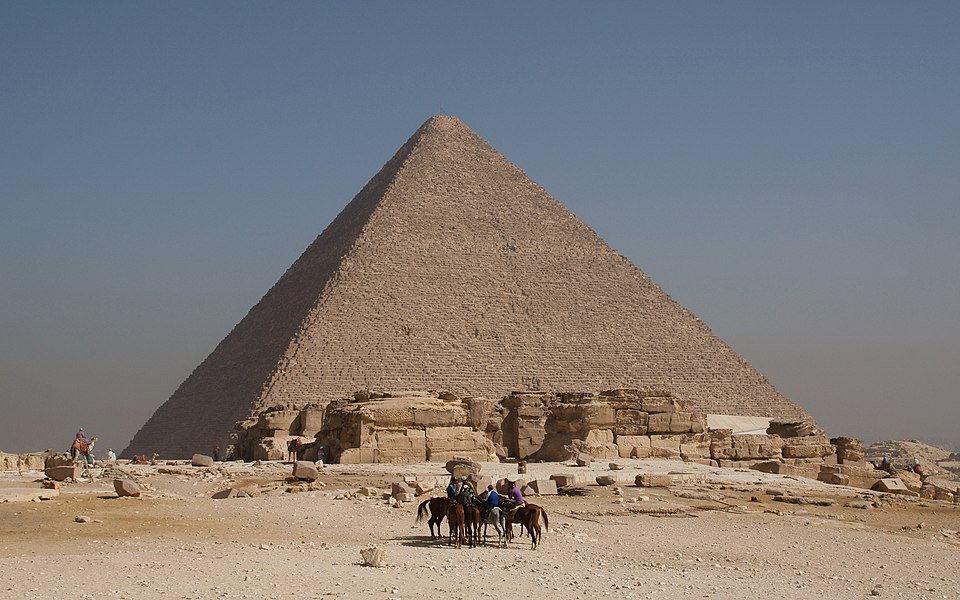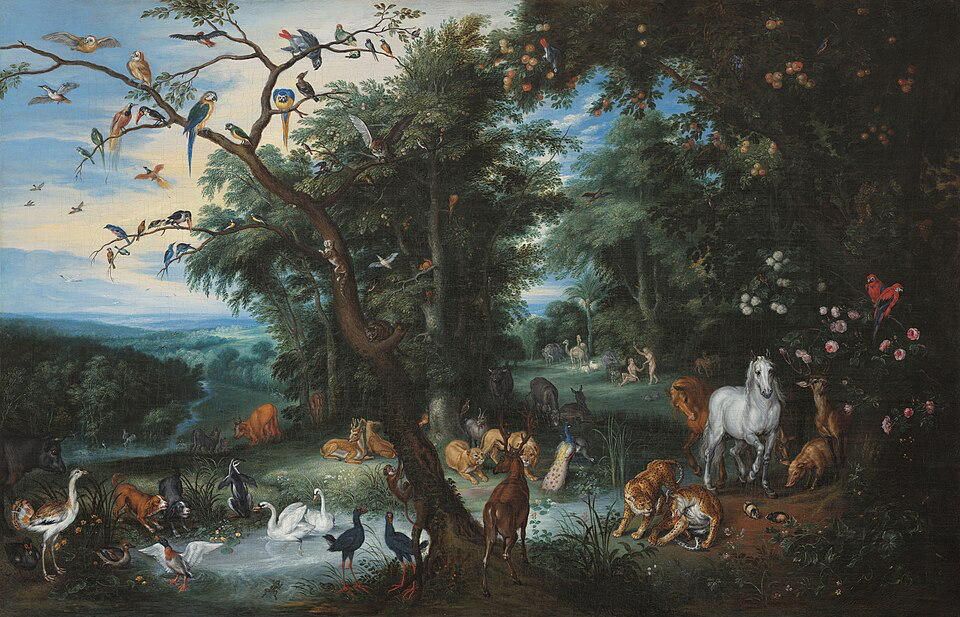The Great Pyramid of Giza might hide more than just Egyptian secrets. Now, Computer engineer Dr. Konstantin Borisov claims this famous structure marks the spot of the biblical Garden of Eden. For centuries, experts placed the Garden of Eden in Iraq near the Tigris and Euphrates Rivers. However, Borisov’s study challenges this long-held view and points to Egypt instead. Through careful analysis, he examined old maps, studied ancient texts, and ran sophisticated computer tests. Ultimately, his research reveals the Tree of Life from the Bible likely stood right at the Great Pyramid.
Old Maps Point to the Garden of Eden
To begin with, Borisov reviewed medieval maps that reveal a fresh take on Eden’s rivers. According to the Bible, a river from Eden split into four branches: the Pishon, Gihon, Tigris, and Euphrates. Upon examining a map from around 500 BC, Borisov found that the only four rivers emerging from the mythical Oceanus were the Nile, Tigris, Euphrates, and Indus. In particular, he points to the Hereford Mappa Mundi from the 1200s, where mapmakers deliberately placed Paradise beside the Oceanus River.

Furthermore, the Bible clearly describes four rivers flowing from Eden. While most scholars interpret this to mean Eden existed in Iraq, ancient historical records nevertheless point us toward Egypt instead.
Where the Tree of Life Stood
Meanwhile, Borisov sees the pyramid’s inner design as a remarkable copy of a tree structure. Specifically, he notes that his computer simulations show charged particles clustering at the pyramid’s peak in patterns resembling tree branches. As he explains, “It cannot be overlooked, that the charge particles in this simulation are arranged in a way that creates several parallel branches extending outward from the center line, creating a tree-like representation.”
Additionally, his model shows how these particles would crash with air molecules to create purple and green light. This fascinating phenomenon might therefore explain why old cultures described the Tree of Life with similar visual features.
To support his theory, Borisov drew from numerous different sources. Not only did he study Greek texts and biblical scripture, but he also looked at medieval maps and revisited early historical accounts. Moreover, he included mythological symbolism and geographical analysis to strengthen his case.
Read More: Scientists Give Estimate on When Jesus Was Born, and It’s Not What You Think
Ancient Historians Support This Theory
Interestingly, Borisov finds support in historical texts that align with his Egyptian location theory. In fact, ancient writers left clues that matched his conclusions. For instance, the Roman-Jewish historian Titus Flavius Josephus wrote: “Now the garden was watered by one river, which ran round about the whole earth, and was parted into four parts.”
Beyond that, Josephus provided more detailed points: “And Phison, which denotes a multitude, running into India, makes its exit into the sea, and is by the Greeks called Ganges. Euphrates also, as well as Tigris, goes down into the Red Sea. Now the name Euphrates, or Phrath, denotes either a dispersion, or a flower: by Tigris, or Diglath, is signified what is swift, with narrowness; and Geon runs through Egypt, and denotes what arises from the east, which the Greeks call Nile.” This historical account explicitly identifies the biblical Gihon (Geon) as the Nile River in Egypt. As a result, this connection strongly supports Borisov’s theory about Eden’s Egyptian location.
A New Way of Thinking
As a whole, this research changes our understanding of ancient religious symbols. If Borisov is correct, the Great Pyramid served a much different purpose than the burial chamber most archaeologists believe it to be.

Of course, it’s important to note that ancient civilizations built monumental structures at locations they considered spiritually important. Generally speaking, they usually chose sites connected to their creation myths and cosmic understanding.
During his research, Borisov performed simulations focusing on the pyramid’s King’s Chamber. Surprisingly, his tests showed charged particles bunching at the monument’s peak, creating light patterns that look like a glowing tree. According to the study, “While emitted from the pyramid, the charge particles collide with neutral nitrogen and oxygen atoms, leading to their ionization, resulting in the release of photons, predominantly in shades of purple and green.”
Not Everyone Agrees
Despite these findings, many archaeologists still place Eden in Mesopotamia, with actual evidence supporting the traditional Iraq location. Nevertheless, Borisov’s knowledge-based approach sets his work apart. By combining biblical analysis, historical research, and computer simulations, he creates a narrative that bridges scientific methods and religious traditions.
Overall, his research prompts important questions about ancient worldviews. Hence, the potential connection between the Great Pyramid and Eden suggests a deeper relationship between Egyptian and biblical narratives that intellectuals previously identified.
What This Garden of Eden Theory Means Today
Whether you find Borisov’s theory believable or far-fetched, his work obviously shows how modern technology enlightens ancient mysteries. In essence, computer simulations, geographical analysis, and cross-disciplinary research reveal new perspectives on humanity’s oldest stories.

Admittedly, there is still no definitive evidence of the Garden of Eden. Yet researchers such as Borisov create unexplored methods for deciphering old inscriptions and monuments. In conclusion, as the investigation continues, the mystery deepens. Perhaps Eden’s true location exists not just as a physical place. Rather, it may live in the relationship between our most ancient narratives and the monumental structures that have withstood millennia to tell their stories.
Read More: Scientists Discover New Biblical Insights About Jesus’ Death and Resurrection at His Burial Site

